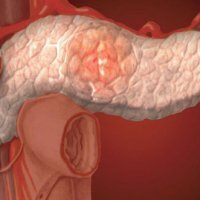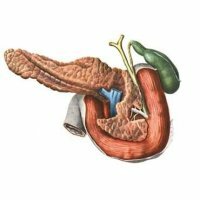Cyst of the liver: causes and treatment
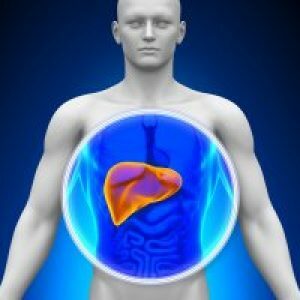
The cyst of the liver is a benign cavity that is filled with fluid.Most often, a transparent liquid is found in the cysts of the liver, which is colorless and odorless, but in some cases the formulations under consideration may contain a jelly-like mass or a liquid of a greenish-brown color, which contains bilirubin, cholesterol, fibrin, mucin, and epithelial cells.If there was a hemorrhage in the cavity of the liver cyst, then its contents take a hemorrhagic character, and the infection of the contents of the formation is accompanied by the formation of a purulent, creamy mass.
The liver cyst can be located in different segments, lobes and ligaments of the liver, superficially or deeply, in some cases such formations have a jumper called the cyst leg.The diameter of the cyst of the liver is always variable - there have been cases of diagnosing the formation in a few millimeters, but there are facts revealing cysts with a diameter of 25 or more centimeters.
As a rule, the benign neoplasm in the liver is diagnosed in 40-50 years and in women - more often.
Table of contents: Classification of liver cysts Liver cyst: causes of formation Clinical manifestations Diagnostic measures General principles of treatment of liver cystsClassification of liver cysts
The concept of a liver cyst combines several nosological forms of similar formations :
- True and false cysts.In the first case we are talking about congenital cysts, which have an epithelial lining of the inner walls.True liver cysts are divided into multi-compartment cystadenomas, simple / dermoid / retention cysts.False cysts of the liver have acquired character, most often formed after injuries, inflammatory diseases of the body or operations.The walls of the cavity of false cysts are fibro-altered tissue of the liver.
- Single and multiple cysts.This difference is in the number of cavities.If a number of liver cysts are detected in one segment of the organ, then polycystic liver will be diagnosed.
- Nonparasitic and parasitic formations.Here there is a differentiation of the cyst of the liver due to the presence or absence of echinococcosis of the liver - with the parasitic cyst this disease will be present.
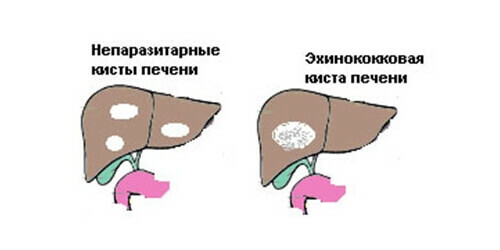
Cyst of the liver: reasons for the formation of
If you consider the causes of the formation of true cysts, then there is no consensus on this issue, either physicians or scientists.It is often considered the connection between the long-term intake of hormonal drugs and the appearance of a cyst, it is believed that formation can form as a result of inflammatory hyperplasia of the biliary tract.
As for false cysts of the liver, the reasons are well known here - necrosis of the tumor, traumatic liver damage, amoeba process or organ damage by echinococcus.
Clinical manifestations
If the benign tumor under consideration is of a small size, then there will be no symptoms of disturbing the patient .As a rule, the first clinical manifestations are noted with a cyst size of 7-8 cm, and also in the presence of multiple cysts. It is noteworthy that in these cases nonspecific symptoms will be present:
-
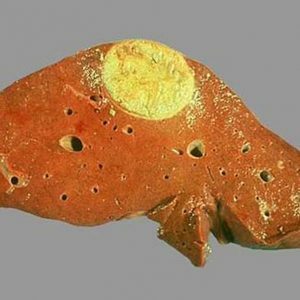 belching, nausea and vomiting;Flatulence and diarrhea
belching, nausea and vomiting;Flatulence and diarrhea - ;
- feeling of bursting and heaviness in the right hypochondrium right after eating or insignificant physical exertion;
- general weakness;
- decreased appetite, up to the total refusal of food;
- increased sweating;
- dyspnoea with physical exertion;
- periodic rise in temperature to subfebrile indicators.
If a giant cyst is formed in the liver, then there will be specific symptoms:
- asymmetric abdominal enlargement;
- sudden, for no apparent reason, weight loss;
- jaundice.
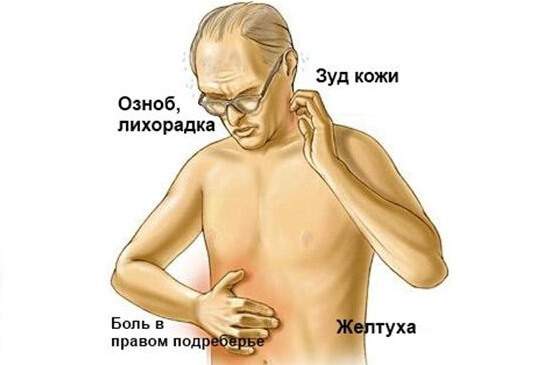
In medicine, there is such a thing as a complicated course of the liver cyst that develops when a hemorrhage into its wall or cavity, suppuration, torsion of the cyst's legs, perforation or malignant degeneration of the neoplasm.If there was a hemorrhage or rupture of the cyst, this critical condition will be accompanied by intense abdominal pains.In such cases, there is a risk of developing peritonitis or bleeding into the abdominal cavity.
Note: if a person has multiple liver cysts( polycystic), it does not matter what size they have.Relatively fast in a patient with polycystic liver will develop liver failure with the symptoms characteristic of this pathological condition.
Diagnostic measures
Most often the benign neoplasm in question is diagnosed accidentally, when the patient is performed an ultrasound examination of the abdominal cavity. But if the doctor has suspicions about the presence of cysts in the liver, he will refer the patient to the following examinations:
- ultrasound examination of the liver;
- percutaneous puncture of the cyst followed by a cytological, bacteriological study of the secretion;
- angiography of the celiac trunk;
- computed tomography;
- liver scintigraphy.
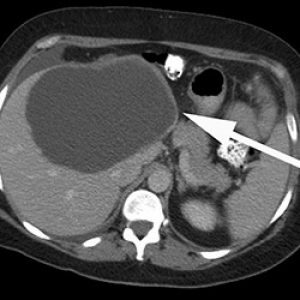 All these diagnostic measures allow the doctor not only to diagnose, but also differentiate the liver cyst from tumors of the small intestine, pancreas, mesentery, from gall bladder edema and metastatic organ damage. To exclude the parasitic origin of the benign formulations under consideration, serological blood tests are performed on the .If the doctor remains in doubt about the accuracy of the diagnosis, the patient is given diagnostic laparoscopy, the most informative method of investigation.
All these diagnostic measures allow the doctor not only to diagnose, but also differentiate the liver cyst from tumors of the small intestine, pancreas, mesentery, from gall bladder edema and metastatic organ damage. To exclude the parasitic origin of the benign formulations under consideration, serological blood tests are performed on the .If the doctor remains in doubt about the accuracy of the diagnosis, the patient is given diagnostic laparoscopy, the most informative method of investigation.
General principles of treatment of liver cysts
Of course, treatment is selected individually in each case.For example, if a cyst is diagnosed whose diameter does not exceed 3 cm and there are no specific symptoms, then the doctor simply conducts a dynamic observation.But due to the fact that the patient's treatment of the benign tumors in question occurs late, doctors choose surgical treatment.
Surgical treatment of liver cysts
Indications for operative treatment of benign neoplasms of the liver:
- bleeding;
- rupture / perforation of the wall of the cyst;
- suppuration of contents;
- compression of the bile ducts with a violation of cholic drainage;
- large and gigantic sizes of education;
- compression of the portal vein system with the development of portal hypertension;
- is an intensive symptomatology that worsens the quality of life.
All surgical interventions for liver cysts can be radical, palliative and conditionally radical. Radical surgery means resection of the liver, if polycystosis is diagnosed in severe conditions, the patient is shown to have liver transplantation.The conditionally radical method of surgical treatment of the cyst of the liver involves the excision of the formation or excision of its walls.Modern medicine prefers to perform the intervention using a laparoscopic method.
Percutaneous puncture of the cyst( palliative interventions) is performed with the aim of sclerosing the formation, it is advisable to carry out such treatment with its dimensions of 5-6 cm( diameter). In addition, the following types of surgical treatment of the benign formation under consideration can be performed:
-
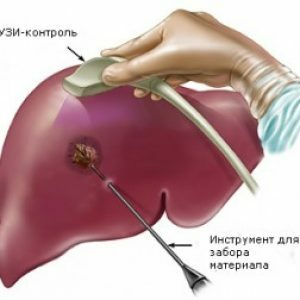 in solitary post-traumatic cysts, which are complicated by a wall rupture or suppuration, an opening and external drainage is performed;
in solitary post-traumatic cysts, which are complicated by a wall rupture or suppuration, an opening and external drainage is performed; - central location of the cyst in the gates of the liver, compression of the biliary tract and the presence of portal hypertension - the reason for carrying out the marsupialization( evacuation of the cysts with filing of its walls to the edges of the operating wound);
- multiple cysts( polycystosis) on the background of the absence of liver failure are opened, then their free walls( fenestration) are excised;
- with giant cysts resort to the imposition of cystogastroanastomosis or cystoenteroanastomosis( a message is created from the cavity of the liver cyst with the cavity of the stomach or intestine).
Diet for liver cyst
 Regardless of the size of the cyst, the patient is given a diet.Correction of nutrition will help relieve stress on the body, keep digestion within normal limits, avoid the development of gallbladder inflammation( cholecystitis) and hepatosis( transformation of liver cells).
Regardless of the size of the cyst, the patient is given a diet.Correction of nutrition will help relieve stress on the body, keep digestion within normal limits, avoid the development of gallbladder inflammation( cholecystitis) and hepatosis( transformation of liver cells).
Diet in diagnosing the benign in question implies a complete rejection of any alcohol, as well as fatty, fried, salted, smoked and canned food. Categorical contraindications include carbonated beverages, sweets, coffee, condiments, spicy sauces and spices.But in the daily menu, a patient with a diagnosed liver cyst must include fruits and vegetables( carrots, strawberries, beets and others), herbs, sea buckthorn, fish, dog rose, sour milk products.Such a balanced diet will support the liver with vitamins and at the same time reduce the body's workload.
Basic principles of the liver cyst diets:
- The patient should consume at least 120 grams of high-grade, easily digestible protein per day.
- The daily fat intake is 80 grams, carbohydrates - no more than 450 grams, but specifically with respect to these indicators it is necessary to use an individual approach, taking into account the general health of the patient and the presence of concomitant diseases.
- All food products must undergo thorough, deep heat treatment.
- Meals should be frequent( at least 5 per day) and be carried out in small portions.
- The total energy value of a daily supply should not exceed 3 000 Kcal.
Please note: all the above principles of dietary nutrition in the cyst of the liver are purely recommendatory.Make a menu, find out the appropriate diet should be individually.
Folk treatment of liver cysts, of course, exists.But the official medicine is categorically against it, since the benign neoplasm in question is "unpredictable", there may be a rupture at any minute, and this is already fraught with the development of peritonitis or hemorrhage into the abdominal cavity.
Than the liver cyst is dangerous
If the doctors performed a radical removal of solitary liver cysts, then they give a favorable prognosis for the disease.Relapses in this case are rare, but the patient will have to adhere to a diet and periodically visit a gastroenterologist-hepatologist for a follow-up examination.
If puncture of the benign neoplasm is being considered, then the possibility of relapse is preserved, moreover, the cyst can be formed again in the early postoperative period and in the late one.
If a patient does not undergo treatment for a liver cyst, does not follow a diet, he will develop hepatic insufficiency.This dangerous condition in almost every case leads to a fatal outcome.
The cyst of the liver is an "insidious" disease, characterized by a long asymptomatic course.When diagnosing the benign liver formation under consideration, it is necessary to immediately start treatment, the tactics of which will be selected by a specialist.
Tsygankova Yana Aleksandrovna, medical reviewer, therapeutist of the highest qualification category


